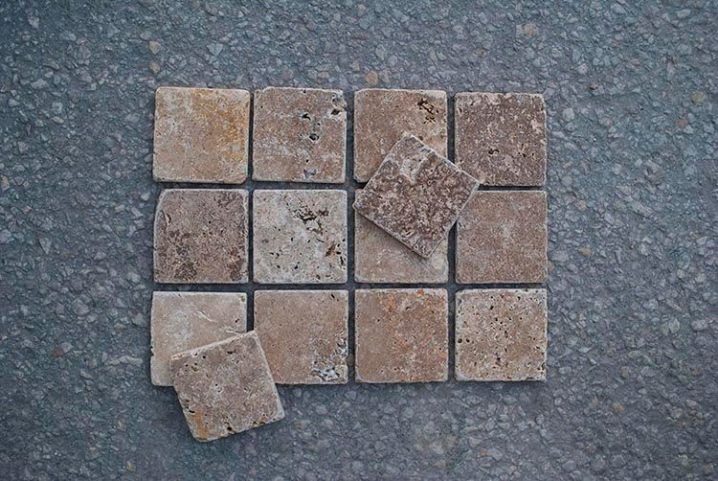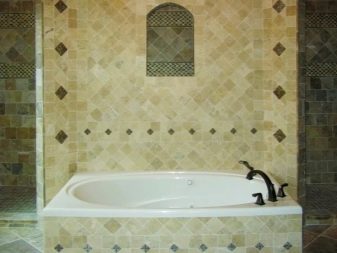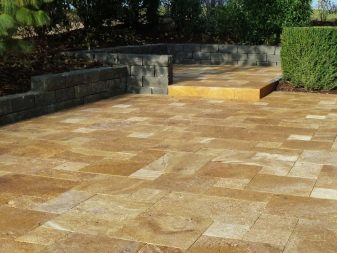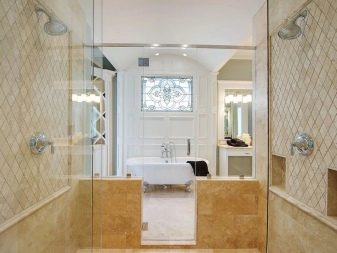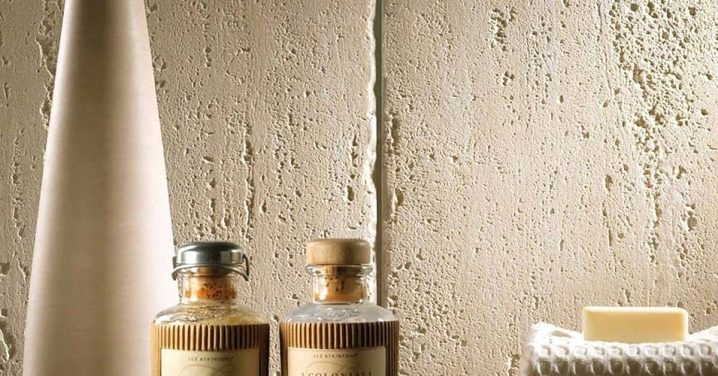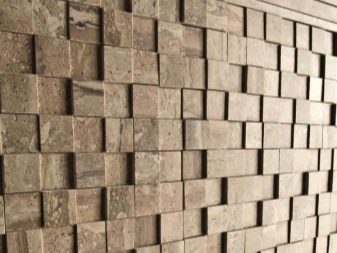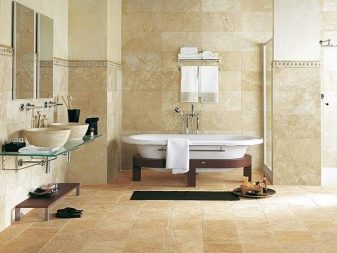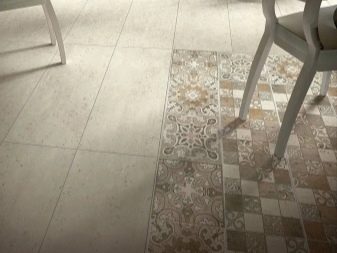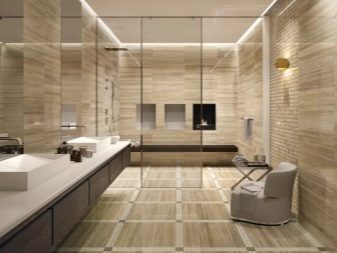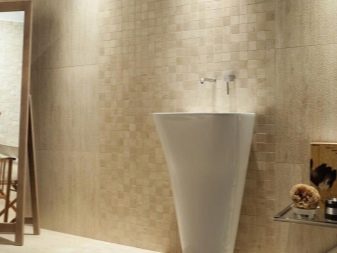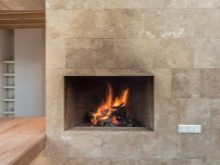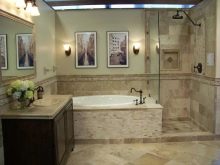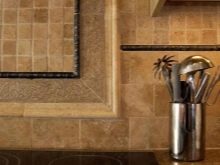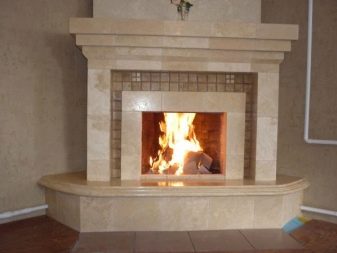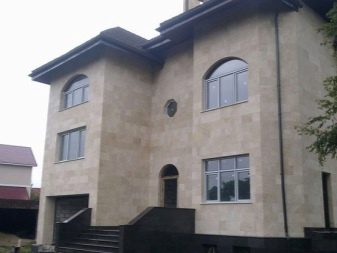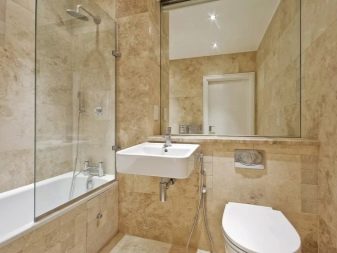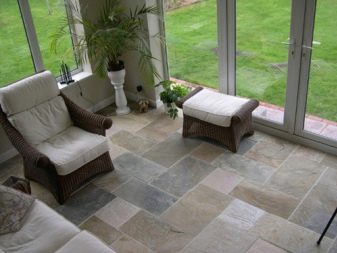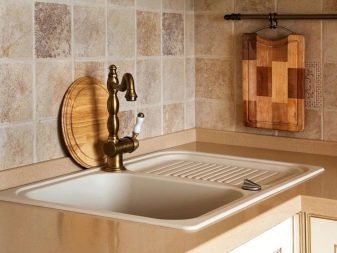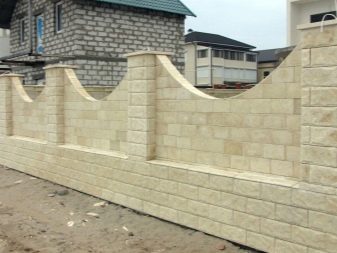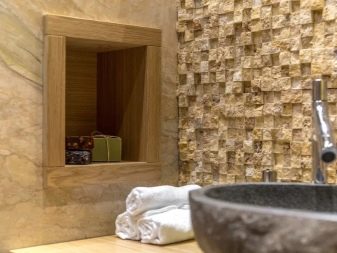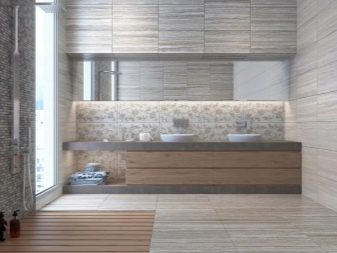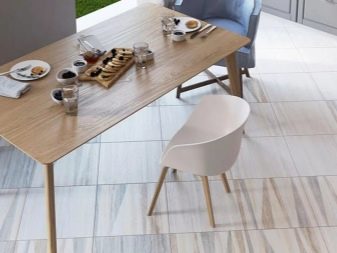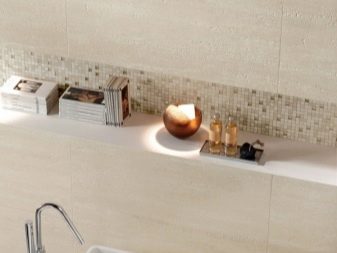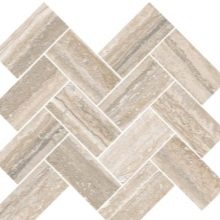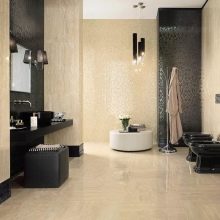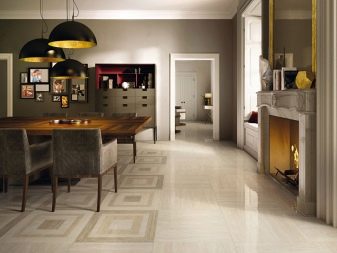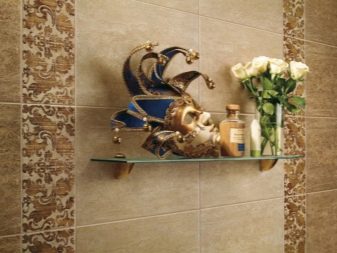Travertine tiles: features and scope
Travertine tile is a unique material that has excellent properties. It can be used for both exterior and interior decorating.
Special features
Travertine (or limestone tuff) is a stone formed in stagnant waters and water bodies with an active course. This material is a cross between limestone and marble. He has the properties of both breeds.
Tiles made from natural travertine can be made in several natural colors: white (quite rare, as there are impurities of various sediments), beige, light brown and light gray. There are Iranian rocks with a reddish tint. The tile of the stone of dark colors from Vietnam is most valued, as it is least susceptible to abrasion.
Travertine has many useful properties that make tile of it suitable for interior and exterior decorating:
- durability and higher strength than limestone;
- frost and heat resistance;
- environmental friendliness. Can even be used in rooms where small children live;
- good noise insulation and heat insulation due to porosity and low density;
- fire resistance;
- Taverine is easily cut and polished due to its porosity;
- possesses water repellency due to closed pores;
- non-slip, therefore it can be used as a floor covering for bathrooms;
- more light and easy to use than natural marble;
- does not corrode;
- beautiful, noble appearance;
- relatively low cost.
Despite numerous advantages, travertine has some disadvantages:
- afraid of acids, including vinegar;
- needs careful care;
- Material can be scratched if mistreated.
Scope of application
The scope of use of travertine tiles is extremely wide. It is used as a finishing material for external and internal works:
- facing the fireplace;
- wall tiles for decorating bathrooms, bathrooms, showers and saunas;
- decoration of doorways, facing the stairs and columns;
- wall tiles for kitchens and living rooms;
- floor tiles;
- facing facades.
Fireplaces decorated with natural stone tiles look noble and luxurious. However, marble is a very expensive material, not everyone can afford it. Travertine is much cheaper, while it looks no less impressive..
The floor tile is resistant to abrasion, is not afraid of water, non-slip due to its rough surface. In addition, the material can be further polished, and it will look more elegant than the raw stone.
Travertine is not afraid of cold, heat and direct sunlight, does not lose its appearance with time, so the tile from it can be used for external facing of the house. Limestone tuff will look great in the house, decorated in a classic style, and in a trendy modern building.
Travertine wall tile looks very elegant. Thanks to its natural pattern, the material will help to make any bathroom, bathroom, sauna or shower modern and stylish.
If the tile is treated with a special water repellent solution, it will be less susceptible to moisture.
Travertine tiles will look good in the living room or in the kitchen. Warm colors of a stone will add a cosiness and light to any interior, at the same time it is possible to issue a tile not all room, but only its part, having created a beautiful and unusual pattern on a wall.
To visually highlight some area, use a tile of stone of different colors.. Travertine tiles can be used to decorate stairs, doorways, and pillars.
The material looks elegant and noble, in any interior it is able to create an atmosphere of comfort, closeness to nature.
Styling Features
Travertine tiles are heavier than ceramic tiles, so some features have to be taken into account when laying them. To strengthen the surface, a metal plaster grid is pre-packed on it, then the plane itself is leveled. As with conventional ceramics, the surface should not have any irregularities, as well as grease and dirt.
The installation itself has no features. For fixing, a special composition is used, which includes cement, sand and a modifier for natural stone.. Compliance with all these simple rules ensures durability and durability of the coating.
Artificial stone
In addition to the natural travertine tile, there is also a tile made of artificial stone, which is made of stone chips by pressing. Artificial travertine can be presented in a different number of colors, it is not at all inferior in its properties to natural stone. On the contrary, artificial limestone tuff is not afraid of moisture, more durable. Artificial travertine tiles vary in size:
- large formats;
- standard sizes;
- small mosaic.
Large format slabs are more suitable for exterior cladding of buildings. Standard size slabs are used for interior work. Mosaic is used for decoration.
Ceramic "under the stone"
In addition to plates made of artificial travertine, there is a ceramic tile with a texture that imitates natural stone. A similar collection is from the Turkish company Vitra, which specializes in the production of sanitary ware and ceramic tiles. The series is called Travertino. It is for those people who love everything natural. This includes wall tiles with travertine texture.
There are several colors available:
- white;
- mink;
- beige;
- cream.
The tile has a different surface:
- matte;
- semi glossy;
- with decor;
- without decor.
The sizes of products also differ from each other:
- 300x600 mm;
- 500x600 mm;
- 450x450 mm;
- 150x900 mm.
Reviews
Most people who decide to decorate their home using travertine slabs on the outside or inside, speak well of this natural material. Those who decide to lay tiles in the bathroom or sauna, note that the travertine surface is warm, pleasant to the touch, requires special care, it is impossible to slip on it.
Those who decided to use travertine tiles on the facade, do not regret their choice. Buyers note that the material looks great due to the natural design, and over time it does not lose its attractive appearance.
It can be concluded that travertine is a wonderful gift of nature that will make any interior unique and inimitable.
In more detail about technology of installation of a tile from travertine look further.

